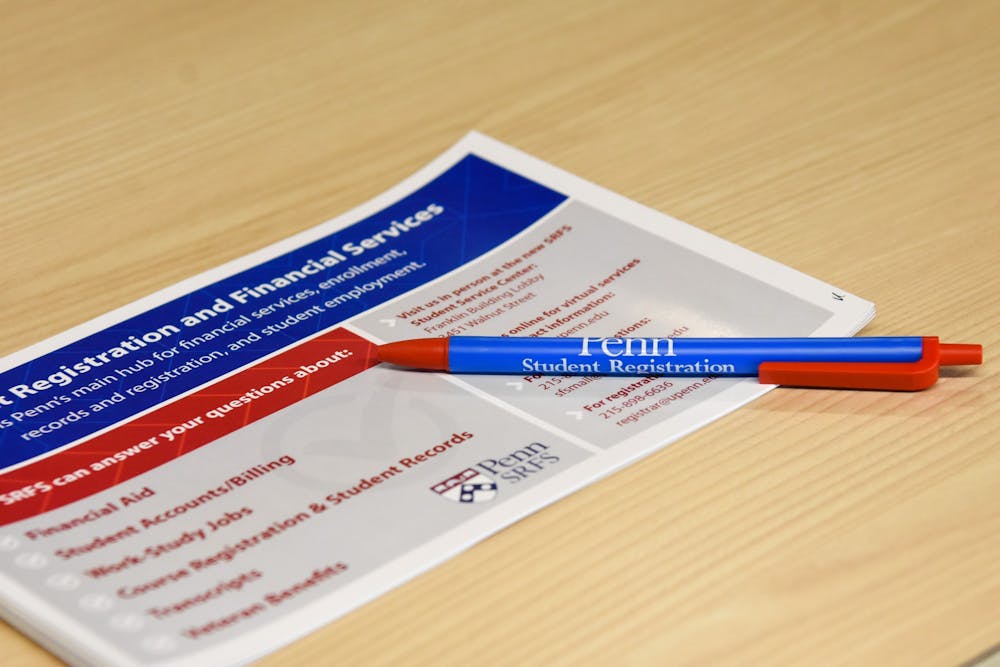
Welcome to Penn, everybody! We are all very excited to have you — as long as you can pay us, of course.
A 2017 study found that the median family income of students at Penn is $195,500. This is possibly the most cited statistic here at The Daily Pennsylvanian’s Opinion Department. Despite Penn’s privileged reputation, 46% of undergraduate students received grant-based financial aid during the 2020-21 school year, and the average package covered the cost of tuition and more. About 10% of undergraduate students qualify as “highly aided.”
On the surface, Penn’s financial aid team is doing great. Eighty percent of students receiving financial aid graduate debt-free, and, adjusting for inflation, the average net cost for aided students has decreased 19.5% since 2005. But this story, though it includes impressive statistics, leaves out the student’s journey.
It was easy to find students to speak about Penn’s failures to its financially vulnerable, but much harder to find someone that would do so on the record. This column uses pseudonyms, and I hope readers understand why: Students receiving aid feared that they were biting the hand that fed them.
Start with Penn junior Greg*: When he and his family needed to decide whether to take out a loan — a choice heavily dependent on the financial aid package he received — he sent inquiries via email to the Student Registration and Financial Services office, but did not receive responses for over a week. He was also hung up on multiple times when attending the SRFS office hours via phone. “These are huge sums of money that we are talking about,” Greg started. “What prevents you, seasoned adults with ‘innate talents,’ from being a bit more proactive?”
Another student, Nursing junior Kelly*, is as proactive as it gets. Over the past month, she called SRFS 11 times before receiving a correct financial aid package. At first, Penn appeared to confuse her with another student. Her estimated family contribution cost roughly $17,000 more than her usual package, and the wording of her awards incorrectly suggested that one of her parents was employed by Penn. Once this was resolved, Kelly found yet another problem: She was missing aid from a loan forgiveness scholarship organized by Penn, which would further decrease her estimated family contribution by $8,000.
“Why bring up these experiences now?” curious readers may inquire. On July 25, SRFS sent out an email reassuring students that had not yet received their financial aid that they would not have to pay late fees for the month. SRFS chose to address this delay merely five days before the due date, with little to no explanation leading up to its announcement, as they stated in the email that “we are working through a large volume of packages as quickly as possible, and we appreciate your patience.”
Conveniently, the suspected reason behind these delays — the switch over to Path@Penn, Penn’s new online student hub, as relayed to me by a Student Service Center counselor — is left out.
This was, as many of my interviewees dubbed it, a “Penn moment.” Path@Penn has been rickety from its start: Students found it difficult to navigate, and SRFS had to roll back Advance Registration carts last spring when the program accidentally allowed a first-come, first-serve course registration. It seems unethical on Penn’s behalf to fail to pilot this flawed system for distributing financial aid, a task with even greater consequences.
Penn’s most vulnerable students deserve more diligence and transparency than this. As I sat in the Student Service Center to deal with my own financial woes, I heard bits and pieces of others’ circumstances. Many students were missing forms or had otherwise made errors on their financial aid applications that they were only hearing about months after their submission. Financial aid applications are often perplexing to both students and parents, and some students receive little to no assistance completing them. I implore you to empathize with the students that make mistakes — especially if you’ve never filled out financial aid forms yourself.
There are clear consequences when students submit information past the deadlines set by Penn, or when this information is incomplete. Students and their families spend weeks, if not months, in the dark about whether they will be able to afford the upcoming year at Penn. Remarkably, students are still expected to pay their bill before the due date, even if SRFS has not delivered their financial aid package to them yet. If students do not receive a package before the bill due date, they have two choices. The first is to incur a late monthly fee of 1.5% with no guarantee of it being waived when a package does come in. The second is to guesstimate how much their bill might be based on previous semesters, and simply hope that their payment is enough.
SRFS does not face similar stakes. It can take four to five weeks for financial aid advisors to even identify mistakes in a student’s form, let alone develop a financial package. The decision to not charge late fees until the next bill’s due date was generous of SRFS, but Greg asserted that students should have been informed of this at least a month in advance — not five days before the last bill was due. Penn’s lack of accountability is a painful embodiment of “rules for me, but not for thee.”
Remember that Penn has committed to meeting full demonstrated need for all four years for its students, but this is a murky promise. Even if Penn honors this promise, the onerous path that students endure to obtain their aid is anything but honorable. It is an embarrassment that this should happen to even one student, let alone enough students that Penn has obliged to waive its late fee.
So, what is to be done?
Kelly made a point of not blaming any of the employees she spoke to in her 11 calls to SRFS. To her, they were the front line, communicating the larger inadequacies of Penn as an institution. Greg called for more “definitive deadlines,” as well as increased transparency and proactivity.
If we were to translate these values into concrete actions that SRFS could take, there’s a few changes that come to mind. For starters, SRFS could do more to publicize and host workshops for students filling out financial aid applications — their Twitter and Instagram accounts have a measly 143 and 121 followers, respectively, and in scrolling through the past year, I could only find one mention of the FAFSA or CSS Profile, two forms that aid-receiving students must complete.
I also suspect that SRFS is underfunded, understaffed, or both. It should not take an additional four to five weeks for a student and their family to have financial peace of mind — in fact, those emotional and economic burdens should have no pre-designated timeline at all, and should be dealt with promptly. This peace of mind could also be achieved by democratization of the formulae used to calculate these packages: Penn’s current calculator is better than nothing, but we only know the inputs and outputs, not the method by which the outputs are calculated.
“If you’re an 18-, 19-year-old, you’re not going to win against Penn,” Kelly remarked. Likewise, Greg spoke of obtaining financial aid from Penn as if it was a battle on unequal footing, characterizing himself as a “20-year-old who hasn’t seen the real world.”
Attending Penn should not feel like we are fighting Penn. Though this real world (and SRFS) is often rife with bureaucracy and incompetence, acquiescing to this treatment contradicts with who we are as students: bright, motivated changemakers. As we begin a new term, I hope that everyone at Penn can speak their mind, be it through the DP or some other avenue. I hope that we can dream up and enact campuswide improvements. It’s what we do best.
We need to demand change. Restructure Penn’s financial services to maximize empathy and minimize distress.
*Name has been changed for privacy reasons.
CAROLINE MAGDOLEN is a College and Engineering junior studying environmental science and systems engineering from New York City. Her email address is magdolen@sas.upenn.edu.
The Daily Pennsylvanian is an independent, student-run newspaper. Please consider making a donation to support the coverage that shapes the University. Your generosity ensures a future of strong journalism at Penn.
Donate






